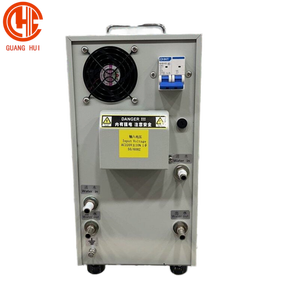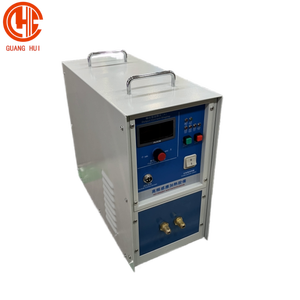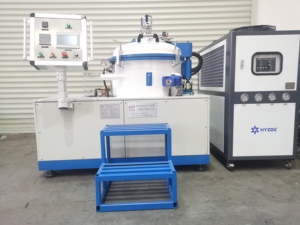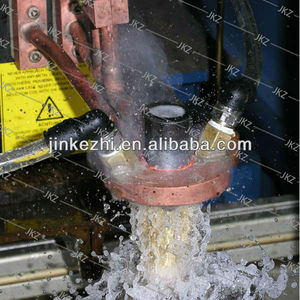
All categories
Featured selections
Trade Assurance
Buyer Central
Help Center
Get the app
Become a supplier

(864 products available)



















Machining center horizontal induction hardening machines
An induction hardening machining center combines hardening and other processes. It usually incorporates an induction coil for heating and a quenching system within the same machine. This reduces the need for separate quenching equipment and increases production efficiency by streamlining the hardening process.
Gear horizontal induction hardening machines
A horizontal induction gear hardening machine has a horizontal heating coil. This design is often more convenient for large or heavy workpieces that cannot be easily turned or moved. Horizontal induction hardening is also typically more cost-effective for large-scale production.
Laser horizontal induction hardening machines
In a laser induction hardening machine, a laser generator generates the heat necessary for hardening. This eliminates the need for external power sources or coils. The absence of an induction coil allows for a more compact design and reduces the mass of the machine, making it lighter and more portable.
Multi-station horizontal induction hardening machines
A multi-station horizontal induction hardening machine has multiple workstations within the same machine. This allows different parts to be heated and quenched simultaneously. It greatly improves production efficiency and meets the needs of large-scale and continuous production.
Robot horizontal induction hardening machines
A horizontal induction hardening robot integrates robots to replace traditional manual operations. The robot can automatically load and unload parts, instead of manual feeding. This increases automation and flexibility, allowing for hardening of parts with various shapes and sizes.
The specifications of horizontal induction hardening machines may vary depending upon the type and model of the machine. However, some core specifications are as follows.
It is important to clean the induction hardening machine on a daily basis. There are some critical areas where employees should pay more attention to while cleaning the machine. For instance, the water tubes should be cleaned thoroughly to remove any dirt or block. Moreover, the parts of the induction coil, such as the slip rings and brushes, should also be cleaned properly on a regular basis to ensure proper electrical connections and prevent any unwanted disruptions during the hardening process.
Additionally, the equipment should be lubricated according to the guidance provided in the user manual or documentation. Lubrication is important for those hardening machines that use chains and gears for their operations. Lubricating the moving parts of the machines reduces the overall wear and tear and keeps the machine in optimum running condition for a long time.
Lastly yet importantly, vacuuming the areas of the horizontal induction hardening machine prevents metal shavings and residue buildup. It not only ensures the optimal performance of the machines but also enhances safety by reducing the potential risk of accidents and hazards.
A horizontal induction hardening machine is applicable in multiple industries and various scenarios. A few of them are mentioned below:
Automobile Industry:
In the automobile hardening machine industry, induction machines are used to harden crucial parts such as camshafts, crankshafts, drive shafts, axle shafts, transmission shafts, and cylinder shafts. These components require a combination of surface hardness for wear resistance and tough cores for impact resistance. Induction hardening achieves this dual-property efficiently, enhancing the longevity and performance of vehicles.
Heavy Machinery:
Induction hardening machines play a role in the manufacturing and maintenance of heavy machinery used in construction, mining, and agriculture. Components like large gears, rollers, shafts, and hydraulic cylinders benefit from induction hardening's abrasion resistance and durability, ensuring the reliable operation of these critical machines.
Aerospace Applications:
In the aerospace sector, strength, lightweight construction, and resistance to fatigue are paramount. Induction hardening machines help enhance the mechanical properties of aerospace components, such as landing gear, turbine shafts, and drive shafts, contributing to the safety and performance of aircraft and spacecraft.
Tool and Die Manufacturing:
Manufacturers of tools and dies utilize horizontal induction hardening machines to create cutting tools, molds, forming dies, and punching tools that have high surface hardness for extended service life. Induction hardening improves the wear resistance of these manufacturing components, enhancing their precision and reliability.
Wind Energy Industry:
In the wind energy sector, induction hardening machines enhance the durability of wind turbine components such as gear shafts, rotor shafts, and drive train elements. These parts endure constant motion and environmental exposure. Induction hardening imparts the necessary hardness and toughness for the reliable generation of renewable energy from wind power.
Consider the following factors when choosing a horizontal induction hardening machine for a specific application.
Workpiece geometry and size
A species of specific dimensions and geometry is suitable for a hardening machine's workpiece. The choice depends on the diameter, length, and design features, like the presence of notches or shoulders. Choose a machine with a hardening coil that can accommodate the workpiece.
Hardening depth and surface hardness
The required hardness and depth are vital in selecting an induction hardening machine. Different machines offer coils with varying capacities to achieve distinct surface hardness levels and hardening depths. Choose a machine with a coil that matches the desired surface hardness and hardening depth.
Production volume and rate
The volume and production speed affect the kind of induction hardening equipment needed. For small production volumes and low rates, an induction hardening machine may be sufficient. However, for greater volumes and faster rates, an induction hardening machine with a horizontal type may be needed for its efficiency and continuous operation.
Cooling system
Select the appropriate cooling system for the workpiece and application. Consider the advantages and disadvantages of the different types, such as water-based, air-based, or oil-based cooling systems, and choose one that meets the requirements.
Coil design and material
Select a coil that matches the workpiece's geometry and is made of a suitable material to ensure effective heat generation and uniform heating during the hardening process.
Q1: How is the part heated in a horizontal induction hardening machine?
A1: The part is heated by magnetic induction from an inductor coil placed around or alongside the part. An AC power supply energizes the inductor, creating a magnetic field that induces electrical currents in the part, which generate heat due to resistance.
Q2: What types of materials can be treated with a horizontal induction hardening machine?
A2: Horizontal induction hardening machines are commonly used on steel and alloy steels. However, the hardening capacity may vary depending on the material composition and structure. Induction hardening machines are not suitable for non-ferrous metals like aluminum, copper, and titanium.
Q3: Can a horizontal induction hardening machine be used for through-hardening, case hardening, or surface hardening?
A3: Yes, horizontal induction hardening machines can be used for surface hardening or case hardening, depending on the type and configuration of the induction coil. However, they are not suitable for through-hardening, which requires uniform hardness throughout.
Q4: Do induction hardening machines have any benefits over furnace hardening?
A4: Yes, induction hardening machines have several advantages over furnace hardening. They offer greater control over the depth and location of hardness, faster heating and cooling rates, less distortion of the workpiece, and reduced energy consumption. Induction hardening is also more efficient and economical for mass production.